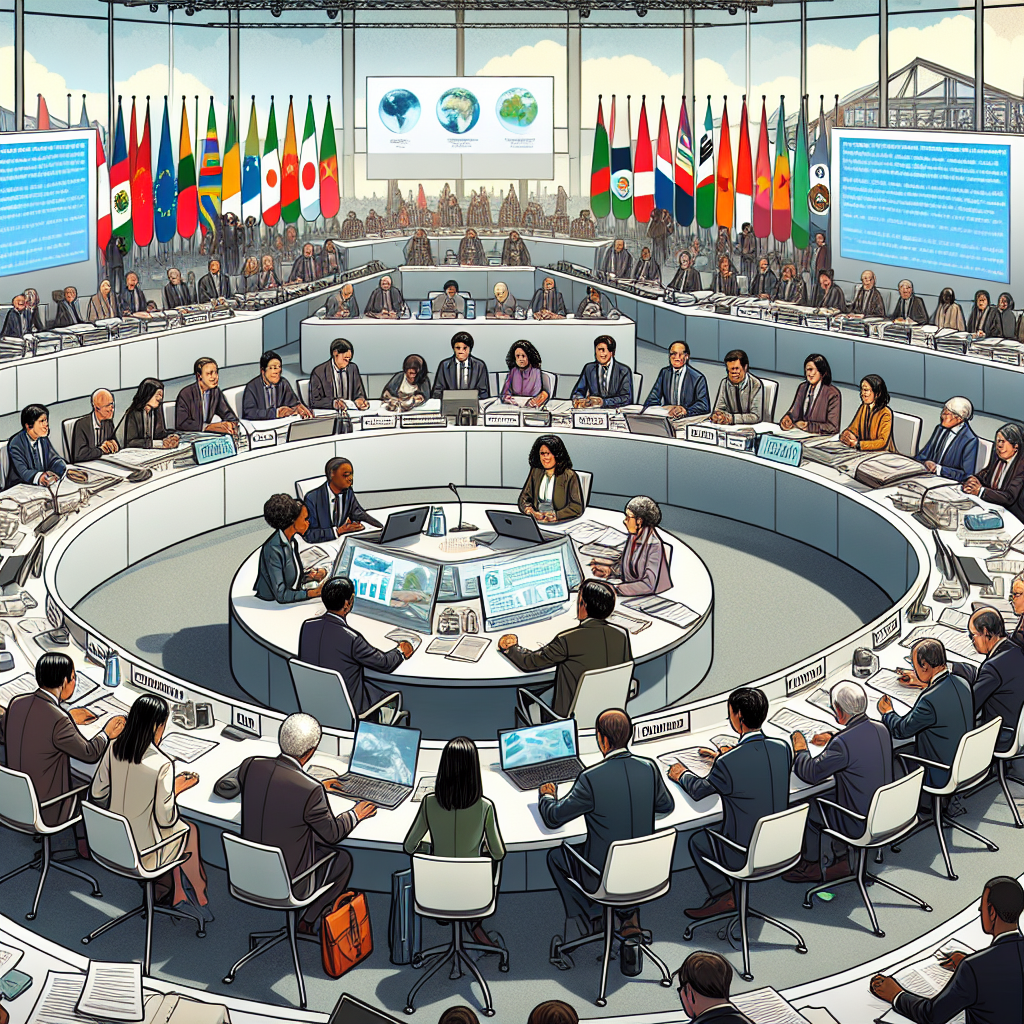Navigating the Climate Crossroads: COP29 Negotiators Enter the Most Challenging Phase
As the world watches with bated breath, COP29—the 29th Conference of the Parties to the United Nations Framework Convention on Climate Change (UNFCCC)—has reached a critical juncture. Negotiators are now entering the most difficult stage of climate talks, where the stakes are higher than ever. With the global climate crisis intensifying, the decisions made at COP29 could shape the future of our planet. In this article, we delve into the complexities of these negotiations, exploring the challenges, opportunities, and potential outcomes that lie ahead.
Understanding COP29: A Brief Overview
What is COP29?
COP29 is the latest installment in a series of annual climate conferences organized by the UNFCCC. These conferences bring together representatives from nearly 200 countries to discuss and negotiate global climate policies. The primary goal of COP29 is to advance the implementation of the Paris Agreement, a landmark accord adopted in 2015 to limit global warming to well below 2 degrees Celsius above pre-industrial levels.
Why is COP29 Crucial?
- Urgency of Climate Action: With climate change impacts becoming more severe and frequent, there is an urgent need for decisive action.
- Global Cooperation: COP29 serves as a platform for countries to collaborate and commit to ambitious climate targets.
- Policy Development: The conference is an opportunity to develop and refine policies that can drive sustainable development and reduce carbon emissions.
The Challenges Facing COP29 Negotiators
Bridging the Gap Between Developed and Developing Nations
One of the most significant challenges at COP29 is addressing the differing priorities and capabilities of developed and developing countries.
- Equity and Responsibility: Developed nations are often seen as having a greater historical responsibility for greenhouse gas emissions, while developing countries argue for the right to economic growth.
- Financial Support: Developing nations require financial assistance to transition to low-carbon economies and adapt to climate impacts.
Balancing Economic Growth and Environmental Protection
Negotiators must find a way to balance economic growth with environmental sustainability. This involves:
- Transitioning to Renewable Energy: Encouraging investment in renewable energy sources while phasing out fossil fuels.
- Job Creation: Ensuring that the transition to a green economy creates jobs and supports communities.
Addressing Loss and Damage
As climate impacts worsen, the issue of loss and damage—compensation for countries affected by climate change—has become a focal point of negotiations.
- Funding Mechanisms: Establishing robust funding mechanisms to support countries facing irreversible climate impacts.
- Legal and Ethical Considerations: Navigating the complex legal and ethical issues surrounding compensation.
Opportunities for Progress at COP29
Strengthening Nationally Determined Contributions (NDCs)
Nationally Determined Contributions (NDCs) are the commitments made by countries to reduce their greenhouse gas emissions. At COP29, there is an opportunity to:
- Enhance Ambition: Encourage countries to submit more ambitious NDCs that align with the Paris Agreement goals.
- Increase Transparency: Improve the transparency and accountability of NDCs to ensure progress is tracked and reported.
Promoting Technological Innovation
Technological innovation is key to addressing climate change. COP29 can foster:
- Research and Development: Support for research and development of new technologies that reduce emissions and enhance resilience.
- International Collaboration: Encouraging international collaboration to share knowledge and resources.
Engaging Non-State Actors
Non-state actors, including businesses, cities, and civil society, play a crucial role in climate action. COP29 can:
- Facilitate Partnerships: Create opportunities for partnerships between governments and non-state actors.
- Recognize Contributions: Acknowledge and support the contributions of non-state actors to climate goals.
Potential Outcomes of COP29
A New Global Climate Pact?
There is speculation that COP29 could result in a new global climate pact that builds on the Paris Agreement. This could include:
- Stronger Commitments: More ambitious commitments from countries to reduce emissions and support climate adaptation.
- Enhanced Cooperation: Greater cooperation between countries to address cross-border climate challenges.
Increased Climate Finance
A significant outcome of COP29 could be increased climate finance to support developing countries. This could involve:
- Scaling Up Funding: Scaling up funding for climate adaptation and mitigation projects.
- Innovative Financing: Developing innovative financing mechanisms to mobilize private sector investment.
A Roadmap for Net-Zero Emissions
COP29 could establish a roadmap for achieving net-zero emissions by mid-century. This would involve:
- Sectoral Targets: Setting sector-specific targets for emissions reductions.
- Policy Frameworks: Developing policy frameworks to support the transition to a net-zero economy.
Conclusion: The Road Ahead
As COP29 negotiators enter the most challenging phase of climate talks, the world is watching closely. The decisions made at this conference will have far-reaching implications for the future of our planet. While the challenges are immense, there are also significant opportunities for progress. By fostering cooperation, enhancing ambition, and promoting innovation, COP29 can pave the way for a sustainable and resilient future.
In the words of climate activist Greta Thunberg, “The climate crisis has already been solved. We already have the facts and solutions. All we have to do is to wake up and change.” As we look to the future, let us hope that COP29 serves as a wake-up call for the world to take bold and decisive action on climate change.
